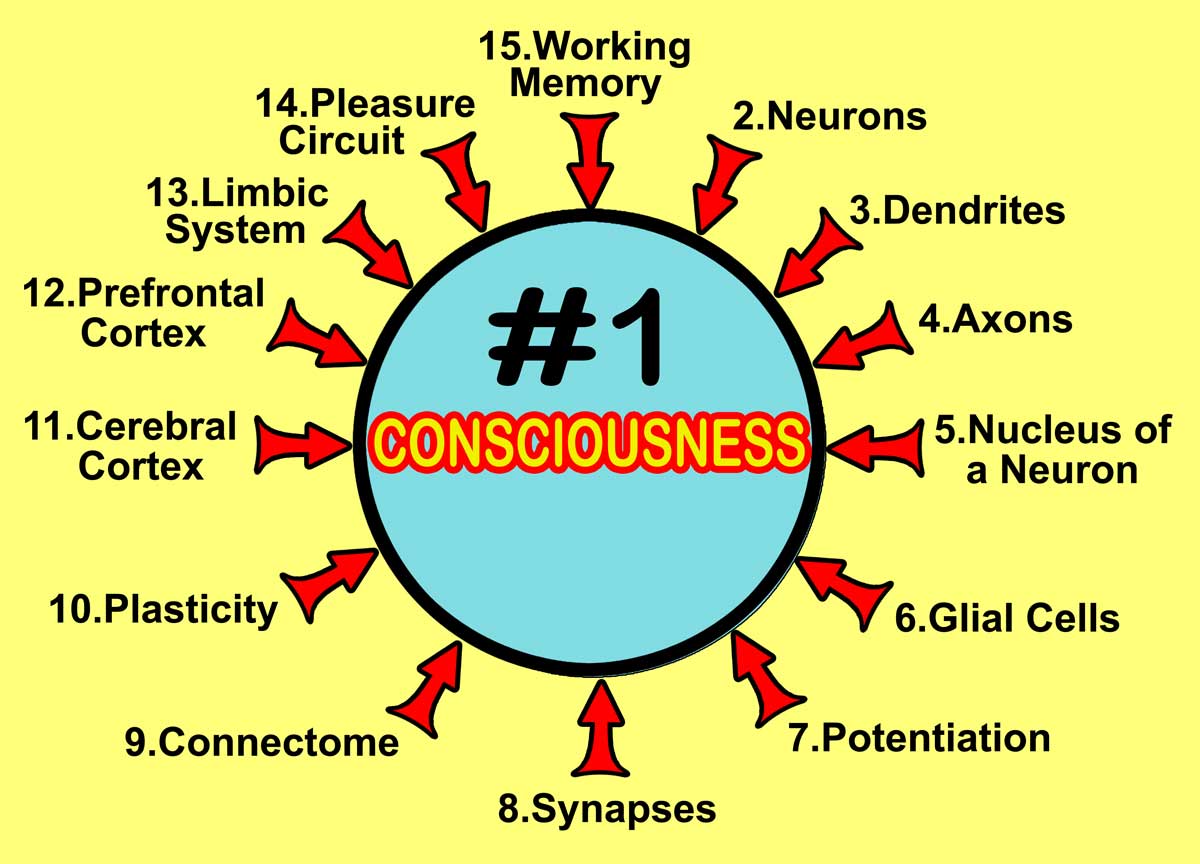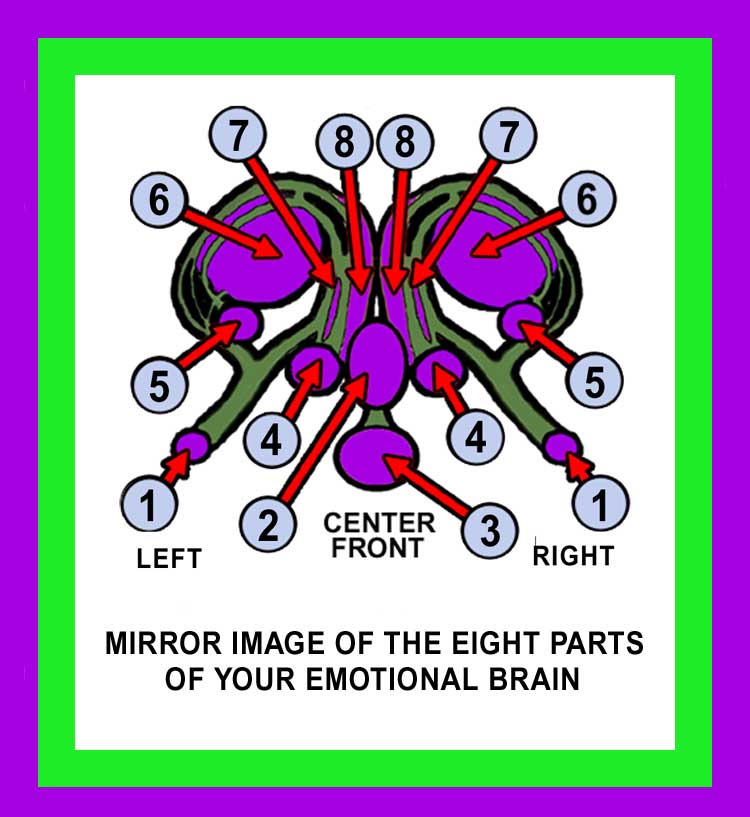 |
ALPHABETICAL BRAIN™ VOCABULARY
DETAILS ABOUT YOUR
LIMBIC SYSTEM
Brain Flash Card #13
April 23, 2016

WHAT IS YOUR
LIMBIC SYSTEM
AND WHY IS IT SO IMPORTANT?

BRAIN SCIENCE FACTS
What is the purpose and function of your limbic system?
The purpose of your limbic system is to produce all of the motivational energy and emotional feelings that your brain and body need to survive and thrive in a complicated world.
It preserves your memories of the salient experiences and consequential decisions that have saved your life or that have worked well for you in the past.
It is helpful to simplify the most complex three pounds of matter in the universe (your brain) by integrating the idea of your limbic system with the overall concept of the global connectivity of your brain's structures and their functions.
You can explore how the new brain idea about your limbic system relates to the new brain idea about your brain's global connectivity by momentarily focusing your attention on the following circular symbol and the #13 red arrow:


See #13 = LIMBIC SYSTEM
THIS SYMBOL REPRESENTS A
SIMPLIFIED HOLISTIC VIEW OF THE
GLOBAL CONNECTIVITY NECESSARY
FOR HUMAN CONSCIOUSNESS

This circular symbol was created to convey a powerful visual image of the previously unimaginable coalescence of the many diverse and interactive physical brain structures that form the wonderful new idea of your self-manifesting holistic brain.
The symbol of 14 red arrows pointing toward the circle of human consciousness, depicts a conscious living human brain that is made up of many parts with a sum total of meaning that is greater than all of its separate parts.
Each of the 15 brain ideas in the image can converge and merge in your mind to produce the process of your self-directed neuroplasticity or, more simply, your mental force.
Unfortunately, your limbic system can also preserve a lot of useless, dysfunctional memories of social habits and mindsets that were learned in your childhood and youth.
The latest brain research has demonstrated that the human brain's prefrontal cortex (executive decision maker) does not develop fully until the mid-20s and early 30s of a person's life.
Therefore, a person's reasoning ability cannot as easily and as fully control strong emotions until then, especially feelings evoked by social peer groups.
Also your limbic system consists of eight major structures, which provide more than eight major functions that are directly involved in your survival activities, particularly, and all of your other thoughts and feelings no matter what their connections are.
In addition, since your hippocampus has several types of long-term memory resources, its healthy functioning is essential for your perception of having an authentic persistent self.
When you understand yourself from the perspective of humanistic and scientific reasoning, the self-image that you construct from your life experienses is not some fanciful illusion, but the genuine real deal.
These eight vital brain structures of your limbic system produce many kinds of neurotransmitters and can even stimulate many hormones in other parts of your body.

EIGHT MAJOR PARTS OF
YOUR LIMBIC SYSTEM NUMBERED:
[1] OLFACTORY BULBS (these two bulbs, which are located on each side of your limbic system complex at the front, are attached inside your two nostrils and give you the sense of smell)
[2] HYPOTHALAMUS (although it consists of one organ structure, it is divided into two parts with two separate functions)
[3] PITUITARY GLAND (this single organ structure is known as the "master gland" since it contols the release of many other neurotransmitters and hormones)
[4] AMYGDALA GLANDS (these two glands, one in each hemisphere, consist of two parts linked together in the limbic system complex, which activate feelings of anxiety, fear, and pleasure as well as memory functions)
[5] PINEAL GLANDS (these glands are on both sides of your limbic system complex and regulate sleep behavior since they control your circadian clock)
[6] THALAMUS (this single brain structure in your limbic system complex connects your brainstem to the rest of your brain and is known as the "gateway" to your brainstem)
[7] HIPPOCAMPUS (this major structure is on both sides of your limbic system complex and deals primarily with long-term memory storage) =
[8] BASAL GANGLIA (this structure, which is located on the bottom of both sides of your limbic system complex, is divided into several sections with different essential functions)

Printable PDF Form
DETAILS ABOUT
YOUR LIMBIC SYSTEM
(for your own editing
and memory consolidation)

RECOMMENDATION: Print this PDF version and read it. Underline or highlight with colors the most important new brain ideas to save them in your long-term memory. Then edit this text to personalize it and read your edited version of these ideas in a few hours and in a few days and then a week later to take advantage of the spaced-repetition method of learning.
NOTE: See also plasticity #10, cerebral cortex #11, prefrontal cortex #12, pleasure circuit #14, and working memory #15.

instantly go to:
BOOK FINDER
LIST OF BOOKS ABOUT YOUR
LIMBIC SYSTEM #13
or instantly return to:
LIMBIC SYSTEM:
BRAIN FLASH CARD #13
or instantly return to:
ALPHABETICAL BRAIN™
VOCABULARY INDEX

produced by
Infinite Interactive Ideas™
|
|
 |















